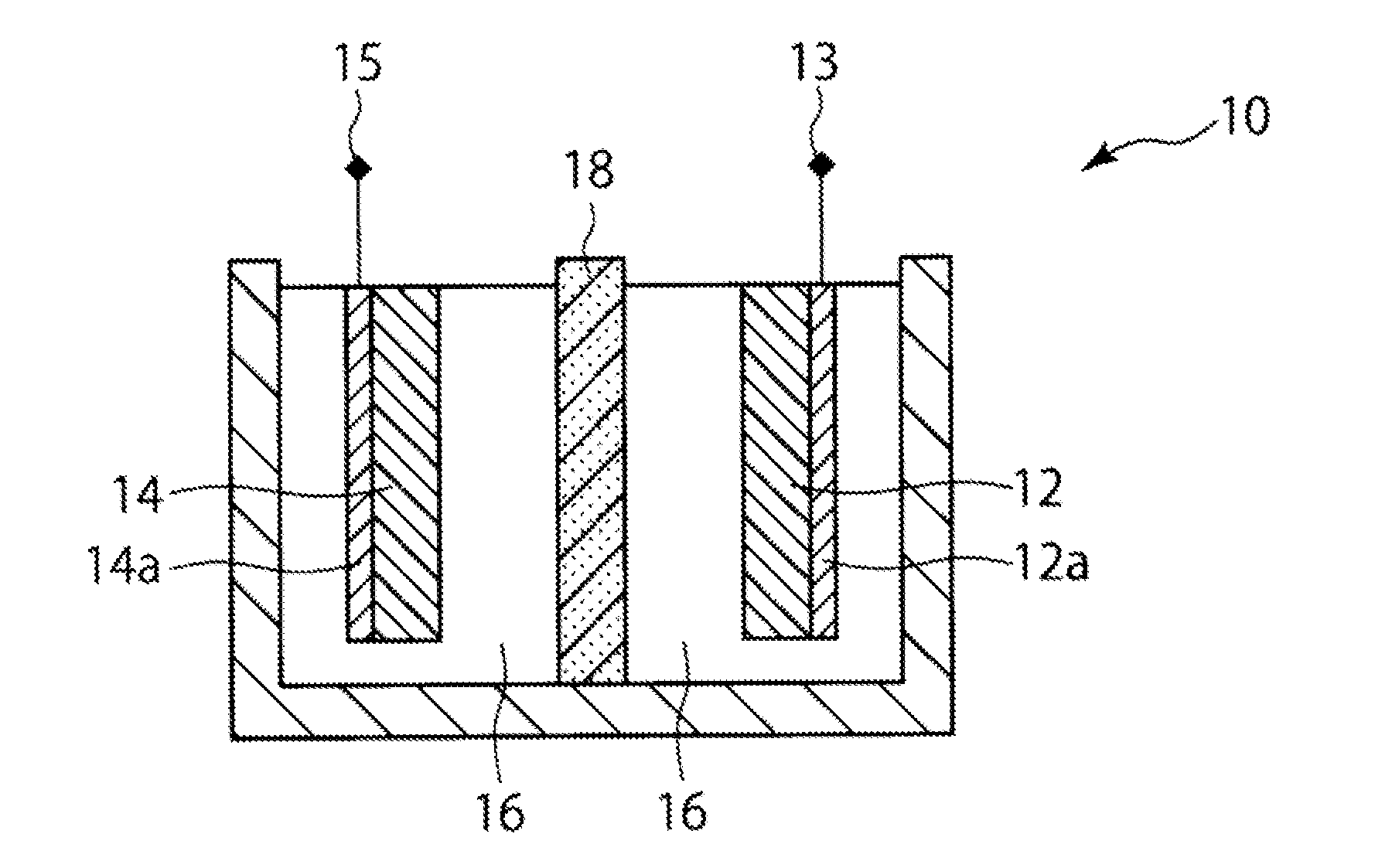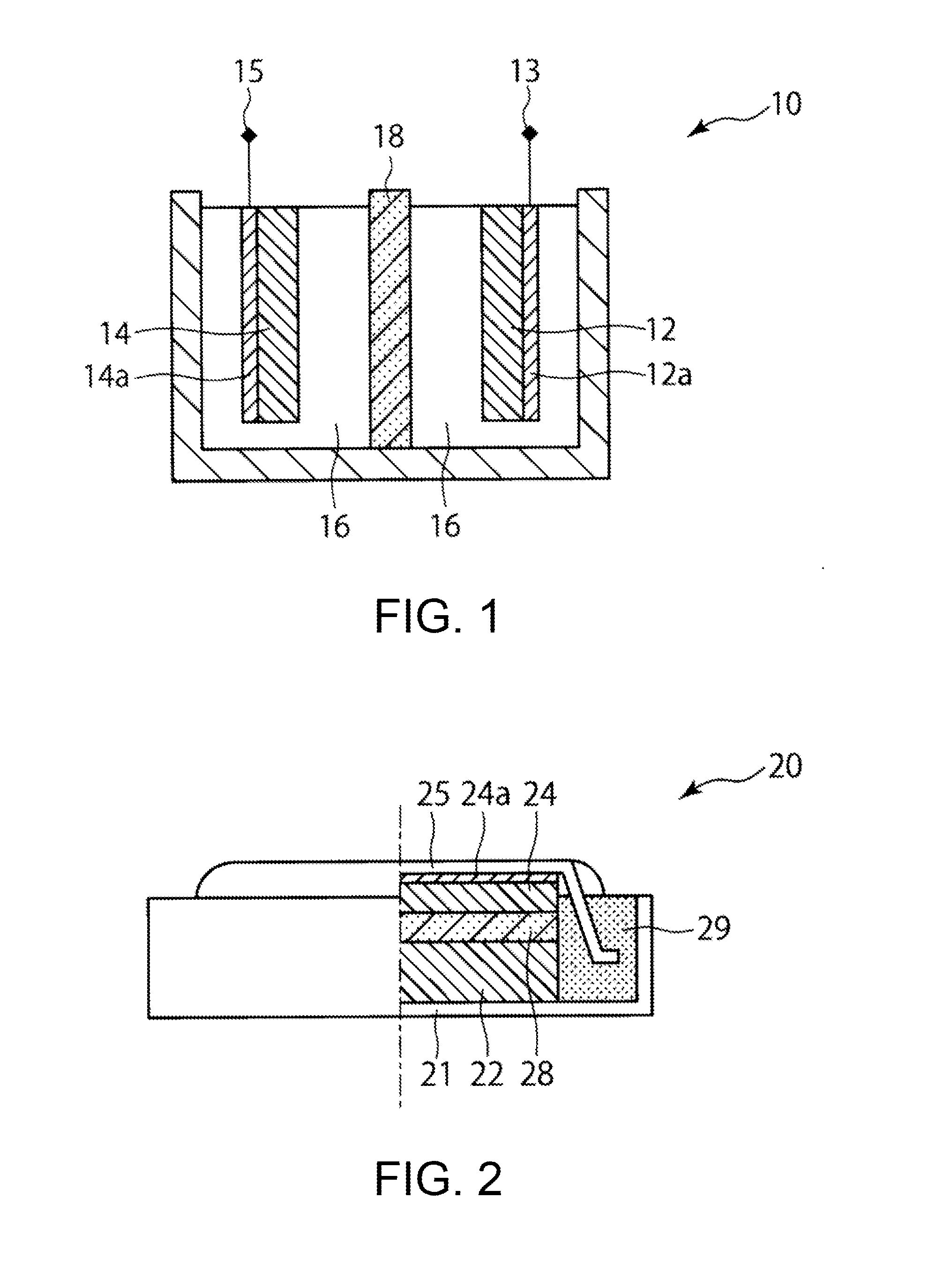Zinc secondary battery
a secondary battery and zinc technology, applied in the field of zinc secondary batteries, can solve the problems of difficult metal that has undergone dendritic growth to penetrate the separator, the negative electrode is not yet in practical use, and the negative electrode is short-circuit, etc., and achieve the effect of greatly enhancing the reliability of the zinc secondary battery
- Summary
- Abstract
- Description
- Claims
- Application Information
AI Technical Summary
Benefits of technology
Problems solved by technology
Method used
Image
Examples
example 1
Preparation of Inorganic Solid Electrolyte Body by Hydrothermal Solidification
[0049]A mixed aqueous solution containing Mg(NO3)2 and Al(NO3)3 at a Mg / Al molar ratio of 3 / 1 was prepared. This mixed aqueous solution was added to an aqueous Na2CO3 solution dropwise to give precipitates. At this time, a sodium hydroxide solution was added to control the pH of the solution to a constant level of about 10. The resulting precipitates were filtered, washed, and dried to give layered double hydroxide powder having an average primary particle diameter of 0.5 μm or less and an average secondary particle diameter of 5 μm or less. This layered double hydroxide powder was pressed by a uniaxial pressing method to give a plate-shaped green compact. Pure water and the plate-shaped green compact were placed in a pressure vessel and heated at 200° C. for 4 hours to give a plate-shaped inorganic solid electrolyte body. The resulting inorganic solid electrolyte body had a relative density of 95% as meas...
example 2
Preparation of Nickel-Zinc Secondary Battery
[0050]The inorganic solid electrolyte body prepared in Example 1 is used to prepare a coin cell-type nickel-zinc secondary battery configured as shown in FIG. 2 according to the procedure presented below. A nickel-zinc secondary battery 20 shown in FIG. 2 has a battery can 21 that accommodates a positive electrode mixture 22 containing beta nickel oxyhydroxide and an electrolytic solution, an negative electrode mixture 24 containing zinc as a negative electrode active material and an electrolytic solution, and a separator 28 that is the inorganic solid electrolyte body prepared in Example 1.
[0051](1) Preparation of Positive Electrode Mixture
[0052]Nickel sulfate is dissolved in water to prepare an aqueous nickel salt solution having a specific concentration. The aqueous nickel salt solution and an aqueous sodium hydroxide solution are mixed to form insoluble nickel hydroxide. The nickel hydroxide is washed with water to remove an unnecessar...
PUM
 Login to View More
Login to View More Abstract
Description
Claims
Application Information
 Login to View More
Login to View More - R&D
- Intellectual Property
- Life Sciences
- Materials
- Tech Scout
- Unparalleled Data Quality
- Higher Quality Content
- 60% Fewer Hallucinations
Browse by: Latest US Patents, China's latest patents, Technical Efficacy Thesaurus, Application Domain, Technology Topic, Popular Technical Reports.
© 2025 PatSnap. All rights reserved.Legal|Privacy policy|Modern Slavery Act Transparency Statement|Sitemap|About US| Contact US: help@patsnap.com


